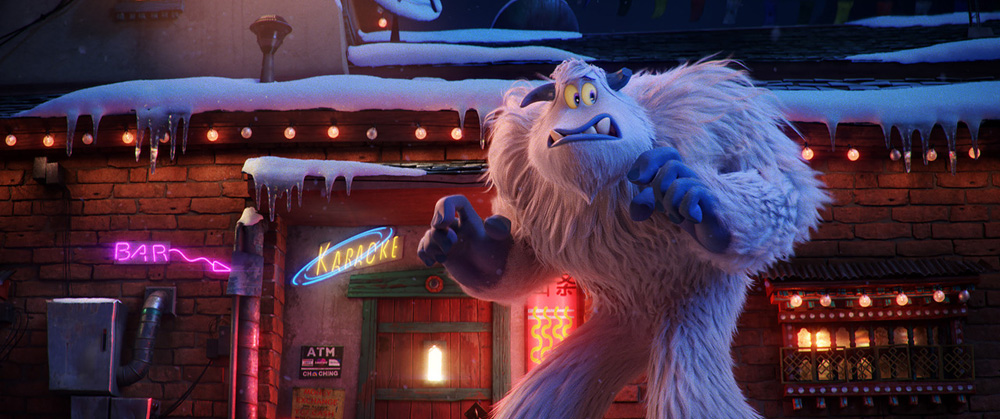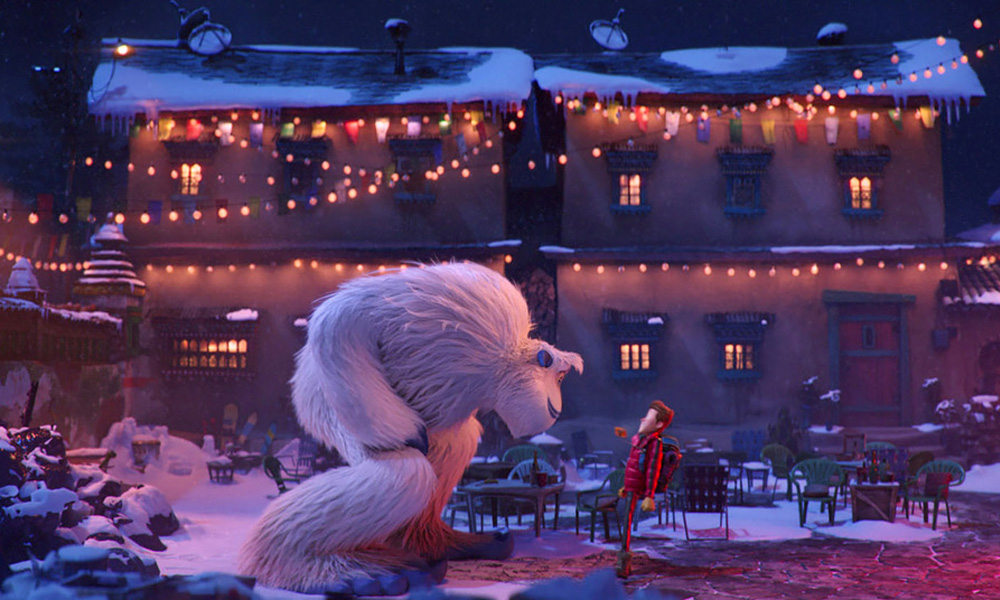The creators of Warner Bros.’ long-gestating movie Smallfoot discuss the making of their incredible yeti family adventure, in U.S. theaters Friday.
***This story originally appeared in the September ‘18 issue of Animation Magazine (#283)***
The journey from idea to big screen studio animated feature is usually a years-long process that involves multiple iterations of the story as it moves through production. It’s rarely a straight line, but it’s also rarely as winding a road as Warner Bros.’ Smallfoot traversed on the way to its September 28 release in theaters.
Based on the book Yeti Tracks by Spanish animator Sergio Pablos, Smallfoot is basically the search for Bigfoot in reverse: A group of yetis living in the Himalayas believe there is no such thing as a “smallfoot,” which is their word for humans. Until one day a yeti named Migo (voiced by Channing Tatum) sees a human and has to convince his fellow yetis that such a creature actually exists. James Corden voices the human Percy, with the yeti cast featuring the voices of Zendaya, Common, LeBron James, Gina Rodriguez, Danny DeVito, Yara Shahidi, Ely Henry and Jimmy Tatro.
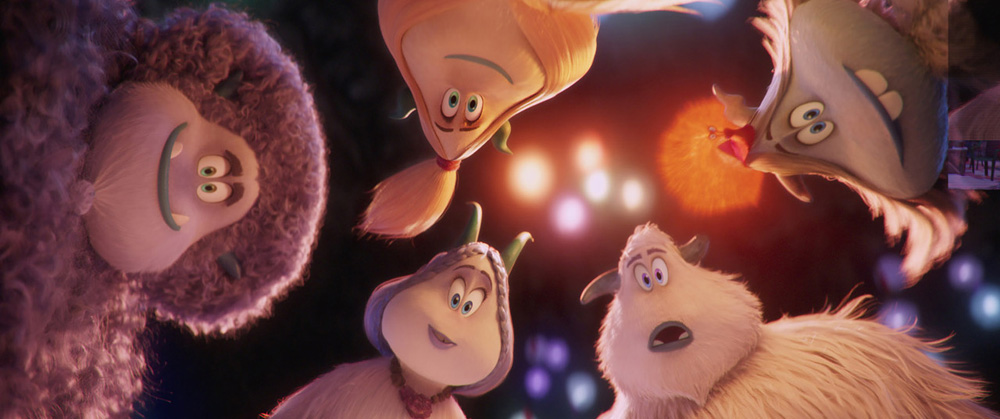
Producer Bonne Radford says Warner Bros. brought her in from DreamWorks Animation to try to get the project on track. She then hired Karey Kirkpatrick to write the screenplay, having previously worked with him on projects including DreamWorks Animation’s 2000 release The Road to El Dorado.
“There was one iteration where the smallfoot, the human character, didn’t say anything, which made it more difficult to tell that story,” says Kirkpatrick, a writer and director whose credits range from the screenplays for James and the Giant Peach and Chicken Run and directing DreamWorks’ Over the Hedge to live-action features including the Eddie Murphy comedy Imagine That. He and Clare Sera wrote the screenplay from a story he worked on alongside John Requa and Glenn Ficarra, also producers on the movie. Executive producers are Nicholas Stoller, Phil Lord, Christopher Miller, Jared Stern, Kirkpatrick, Pablos, Courtenay Valenti and Allison Abbate.
But six months in, Toby Emmerich took over as head of Warner Bros. Pictures Group and added a new twist to the deal: It would be a musical, and Kirkpatrick would direct. Part of the reasoning behind the move was that Kirkpatrick and his brother, Wayne Kirkpatrick, had written the music and lyrics for the Tony-winning Broadway musical Something Rotten!
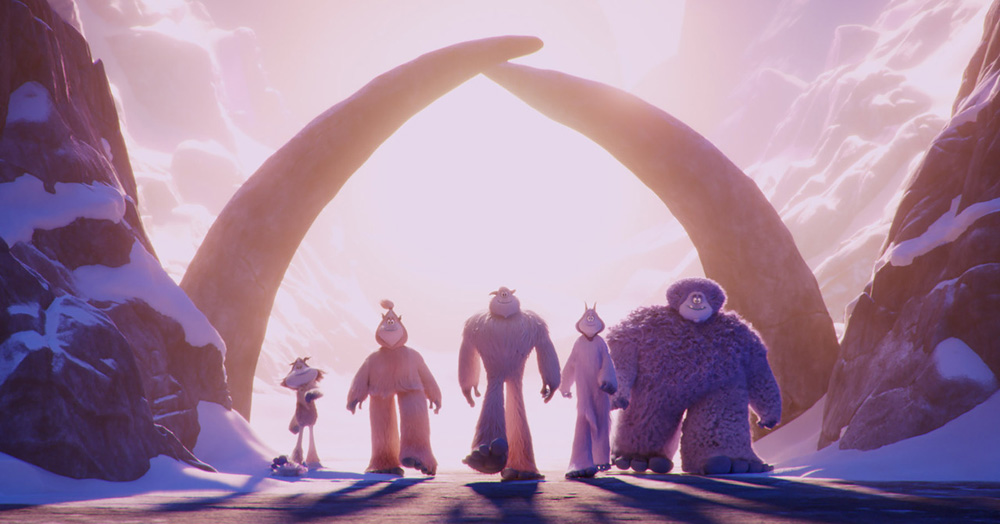
“It was a big bite to take on, and it was past the point where you normally would start writing songs for a musical,” says Radford. ”But [Karey] dove in feet first.”
The final film has six original songs in it, Kirkpatrick says, including a particularly fun new take on the classic rocker “Under Pressure” by David Bowie and Queen, sung in a karaoke bar scene by Corden.
“The idea was, a song starts as a karaoke track James Corden is going to sing along to, but then he goes rogue and makes up his own lyrics to fit his own particular story that he’s trying to tell,” says Kirkpatrick. “With the surviving members of Queen’s blessing, we wrote a new lyric and a new melody over the existing track and it was very cool to get an email from Brian May saying, ‘Yeah, go for it!’”
The other original tunes are performed by the cast, with one highlight being a rap for Common’s character and a song at the end of the film performed by Cyn, a new artist discovered recently by Katy Perry.
Challenges of Fur and Snow
The story posed a number of significant animation challenges, including a cast of fur-covered characters, snow, wind and clouds.
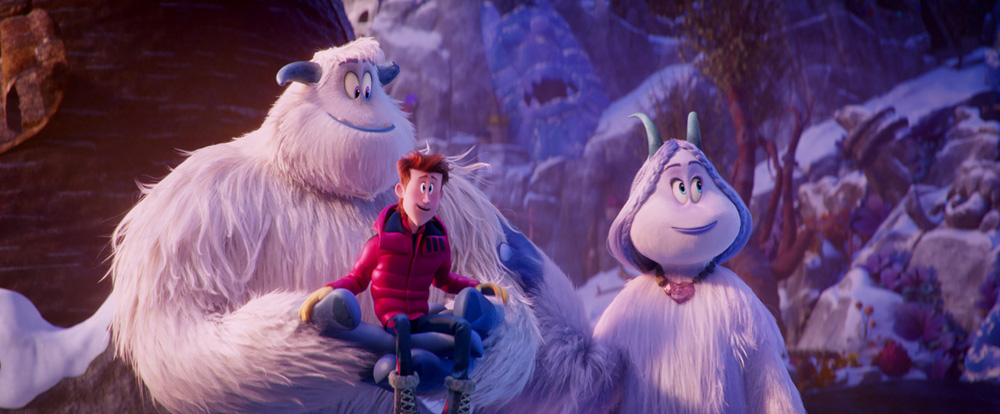
“We knew early on just the amount of snow and fur in this movie was going to make it pretty complex,” says Kirkpatrick. “We had lots of early conversations about how we were actually going to pull this thing off and get it finished with this many yetis and this much fur.”
With lead characters having as many as 9 million hairs, all of which have to move in the wind, simulations were essential to the process. “We spent a huge amount of time doing the groom or the hair design on these characters once the rig was done, and they took at least six months each to do,” Radford says.
“Early on, we came up with hair simulation cycles that could run at five different levels of wind intensity,” says Kirkpatrick. “That’s how we do these things in order to manage the 500 yetis that live in the village when they’re all on screen in the snow, with footprints and interacting with each other. Some of these frames in the early days took 200 hours to render one frame, so when you do the math you realize we’re going to run out of hours really soon.”
Radford says a mix and match system for human and yeti body parts made the crowd scenes possible, and automation was used as a foundation for snow and environmental effects.
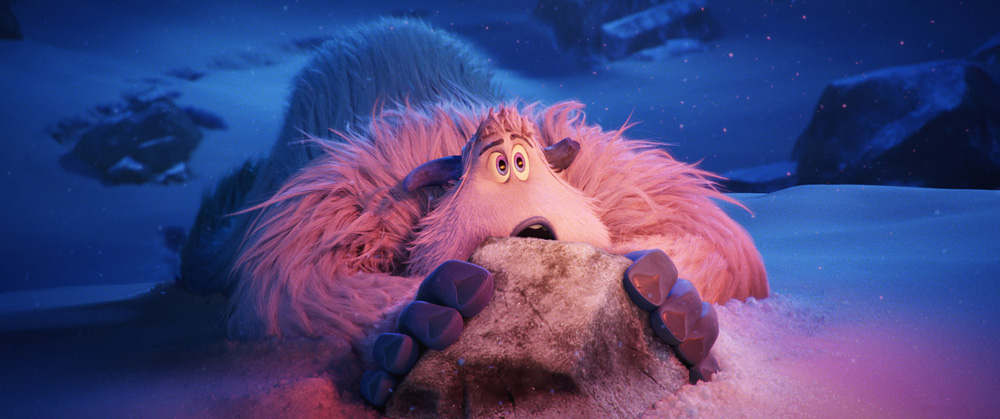
Yetis at Play
The yetis themselves are more human in build and movement than anything else, with Kirkpatrick saying they tried to play them simply. “We wanted to capture the really innocent, naive nature of the yetis,” he says. ”I kept referring to the people in the movie Fargo, that there’s kind of an ‘aw, shucks,’ kind of ’golly gee’ attitude toward the yetis.”
That played well with paying tribute to Warner Bros.’ animation history. “We wanted to really pay homage to our Looney Tunes roots,” says Kirkpatrick. “We wanted to be free to create a style of physical comedy that is a cousin to Bugs and Daffy and Road Runner and Wile E. Coyote and all of those things that went before, to allow us to really push the boundaries of our cartoonish animation. We have a few sequences were they can fall a thousand feet and land in the snow and leave a yeti-shaped impression and not die.”
Several techniques were used to add color to a movie full of snow, clouds and yetis. “What we ended up doing is not making every yeti white, to get some diversity in our village,” says Kirkpatrick. “Some of them have twinges of purple and peach color, and some brown.”

The yeti village, which is located in a caldera in the Himalayas, also needed an injection of color — a goal accomplished with simple techniques like adding colored awnings as well as doing some deeper thinking about the location.
“We treated the village like a primitive world that was on its own evolutionary track,” says Kirkpatrick. ”In the same way that there are phosphorescent fish in the ocean, they have these phosphorous furry snails that populate their village that are extra large and they glow different colors. You can kind of clap them on and clap them off — they get startled by sound and it excites them and they glow — and it allowed us to create these different colorful light sources.”
As Karl Herbst, Smallfoot’s vfx supervisor at Sony Imageworks, points out, “The movie was challenging for us on many levels. From the shear amount of furry characters to the numerous complex environments, it would have not been possible to bring it all to the screen without a lot of collaboration between the SPI and WAG teams. Karey and Jason’s wish for such a high level of fidelity in all aspects of the film really pushed us and made the project a labor of love for everyone on our production team. Coupling that with the close relationship we developed with the WAG visual development team, helmed by Ron Kurniawan and Devin Crane, allowed all of us to creatively bring the whole thing together and make a world where you want to dive into the snow and hug these plush lovable characters.”
Skype Is the Limit
With 1,700 shots in the movie, Kirkpatrick relied heavily on co-director Jason Reisig to get the work completed. Kirkpatrick says the creative positions on the movie — production designer Ronald A. Kurniawan, art director Devin Crane, the editorial and storyboarding departments, etc. — were based at Warner Bros.’ studio in Burbank. Reisig relocated to Vancouver for nine months to supervise the animation work at Sony Pictures Imageworks.
“I try to stay very big picture,” says Kirkpatrick, adding he often is acting out for animators via Skype. “What Jason is much better at than me is keeping his eye on the artistic side of things, which is a lot of the technical aspects of animation.”
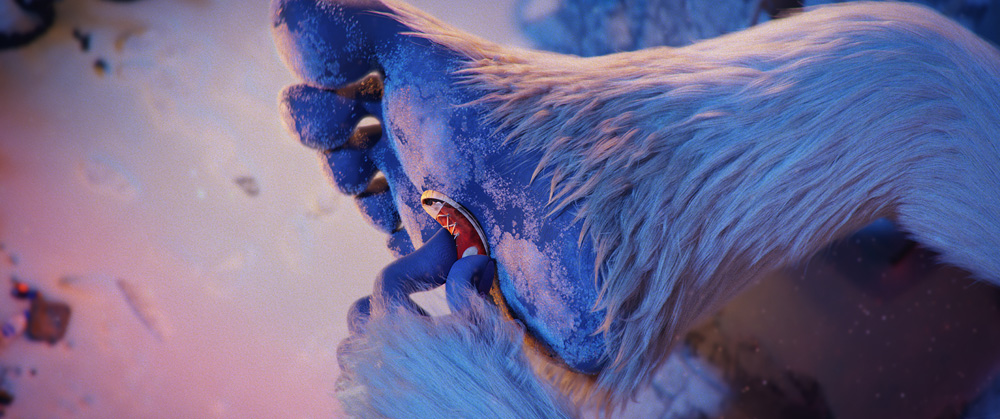
Reisig came to the project from DreamWorks Animation, where he spent more than 15 years as an animator and supervising animator. He also was part of the team that earned a Technical Achievement Award from the Academy of Motion Picture Arts and Sciences for developing DreamWorks’ Premo character animation system.
”I had never worked that way before and I thought it was really good to be amongst the team,” he says. ”It’s a much more personal interaction, which I thought was great.”
Reisig says the crew kept its focus and used a very clear and efficient method for approvals and getting notes to the animation team, which at its peak numbered about 105 members. Keeping them organized in teams that supported each other and attended each other’s reviews helped keep the project on track.
”It always felt like it was a small group in the reviews and I think that really helped it, because it felt like we still had that face-to-face contact,” Reisig says.
On the production side, Radford says it was important to get everything right in a sequence before sending it to animation as well as being flexible and making the most of the crew’s time and talent.
“Managing that process, moving the puzzle pieces around so that what went into the pipe was going to be done and finished and be accurate, and continue to work on the sections and scenes of the movie that still needed work, that’s always the challenge,” she says.
Warner Bros.’ Smallfoot opens on September 28 in the U.S. and October 12 in the U.K.
